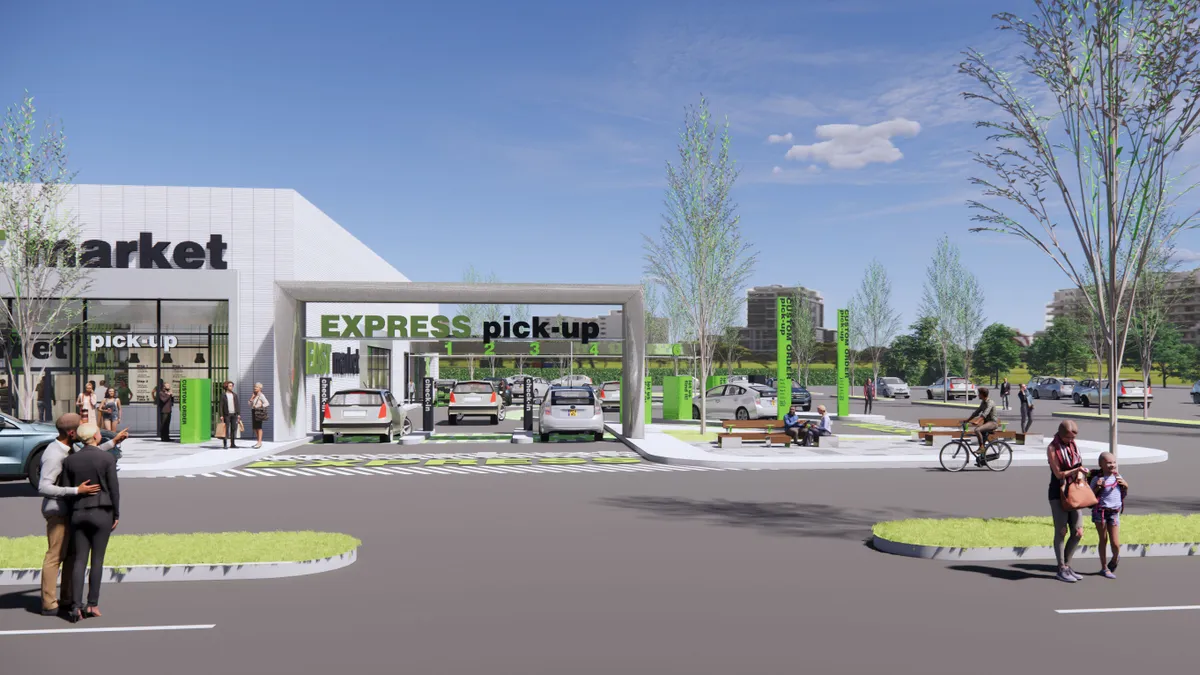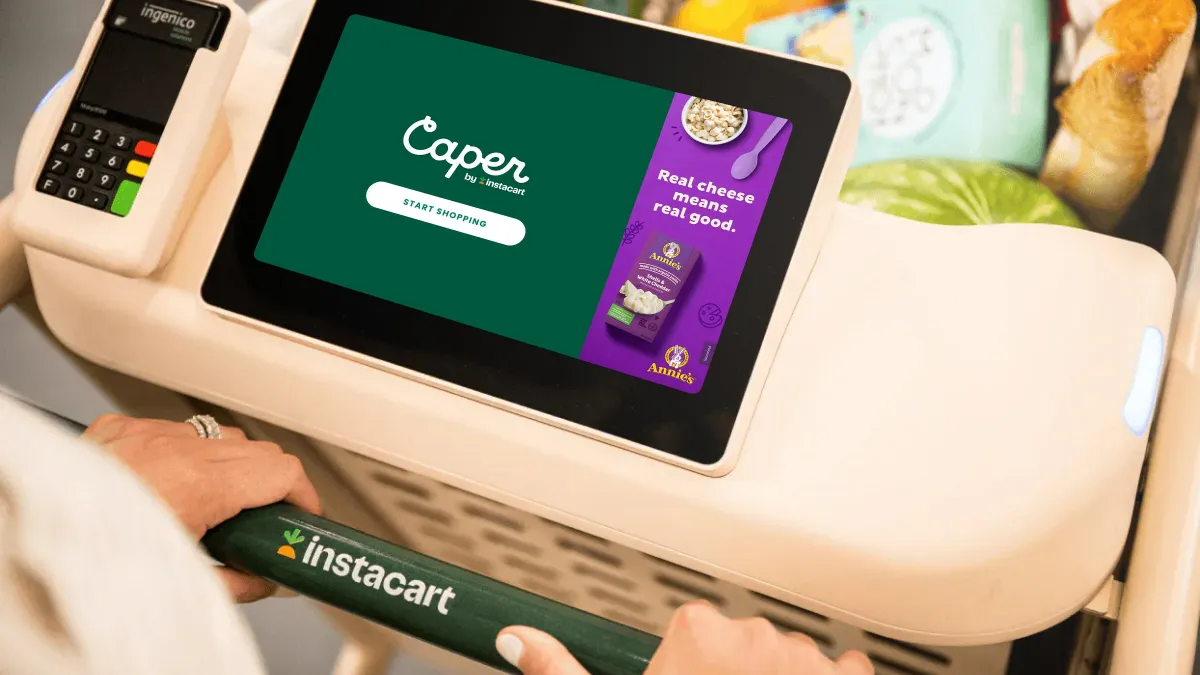Expanding e-commerce and turning stores into meal destinations were high on grocery executives’ to-do lists before the COVID-19 pandemic. Now they’ve shifted into warp speed, and that promises to fundamentally change the layout of stores in the future, according to one branding and design expert.
Tom Custer, vice president with FRCH Nelson, which has worked with restaurants like Subway and KFC as well as grocers like Target and Kroger, sees more grocers adopting a hybrid store model that combines an elevated in-person experience with enhanced online fulfillment capabilities.
With online grocery adoption accelerating ahead of schedule and expected to become a regular habit for a significant number of shoppers, grocers need more space close to where customers live and work to pick and assemble same-day orders, Custer said. He expects retailers to expand their backrooms — a process that can be accomplished without having to close down stores — and add automation where order volume is particularly high.
As curbside pickup continues to gain steam, Custer expects retailers will build out more space for staging and fulfillment and establish store-side destinations for shoppers. Many retailers have blocked off spaces in their parking lots for pickup customers. Custer expects grocers to build high-volume drive-thru pickup depots as well as lockers and automated pickup towers where shoppers can retrieve their orders.
"We see them using the parking lot differently, the back of the building differently in the future than they do today," he told Grocery Dive. "It makes the customer journey better, and it’s better for them operationally as e-commerce continues to grow.”
These e-commerce-driven updates are starting to make their way into store retrofits. Whole Foods is turning its in-store cafes into e-commerce staging areas in cities like Philadelphia and Atlanta. Walmart has dabbled in automated grocery kiosks and has added bright orange pickup destinations to hundreds of its stores. Hy-Vee has built pickup lockers on its store grounds as well as at nearby destinations like local hospitals.
Smarter, more targeted assortments
Expanding backrooms means shrinking selling floors, of course. But Custer said this is an overdue step for many retailers with bloated center store assortments.
Retailers can determine through sales receipts and predictive analytics which products don’t make the cut — a SKU rationalization process that grocers like Kroger are familiar with. Rather than cut whole categories out of the business, Custer said, retailers could sell products like pet food or apparel online, or only stock the top performers in stores and then offer a wider assortment online.
“Do you really need a whole aisle of pet food when you’re already competing with pet food stores? That could be a subscription-based service or an online purchase," he said.
Grocers have so far explored this “endless aisles” strategy primarily through direct shipment programs like Albertsons’ Marketplace and Kroger Ship. As online shopping grows, Custer said, it makes sense to offer a wider assortment online that can be available for same-day service. To make shoppers aware of everything that’s available through e-commerce, grocers can utilize store signage, mobile apps and in-store digital kiosks.
The idea of elevating the store experience and moving non-perishable products online isn’t new, but how and when retailers might make this shift has been open to debate.
Grocers like Wegmans, Whole Foods and H-E-B have installed restaurants, self-service bars and new meal concepts while still retaining the traditional aisle-by-aisle shopping format. In China, Hema Market lets shoppers browse elaborate fresh food displays and order products for same-day home delivery using the store app. Firms like Locai Solutions and Alert Innovation have proposed automated store concepts where robots pick and pack non-perishable goods while consumers shop for fresh products and dine at store eateries.
With online grocery sales on track for nearly $40 billion in sales this year, the case for grocery stores that push the envelope on their already inherent experience and fulfillment roles is growing, Custer said. But it won’t be a uniform undertaking across the country. He sees hybrid stores working best in suburban markets where foot traffic and online demand are both high.
Safety restrictions and new consumer attitudes have altered the store experience and promise to impact store designs going forward. Self-service stations like salad bars may never come back, Custer said. Retailers will likely shift toward more packaged food displays and offer more made-to-order options.
“Foodservice is not going away, it’s just going to be converted,” Custer said. “The salad bar might go away, but maybe you can still custom order through the app a personalized salad, and you pick it up already prepared.”
He also sees food halls like the one Kroger recently installed in its downtown Cincinnati flagship expanding, particularly in large stores and urban locations.
Restaurants, which have been claiming meal share from grocery stores for years, were dealt a swift blow at the outset of the pandemic as locations across the U.S. were forced to shutter or shift to takeout service only. This gifted grocers an opportunity to remind shoppers that they could fill a variety of meal needs, from fully prepared to cook-from-scratch. As restaurant restrictions lift and operators get better at takeout and delivery, however, grocers will have to step up their assortment of fresh, convenient meals and services, said Custer.
“I think restaurants are learning from this, but they’re going to come out of it and continue to grow, and grocery is seeing that and wondering how they can reinvent themselves and retain some of that share volume,” he said.





















